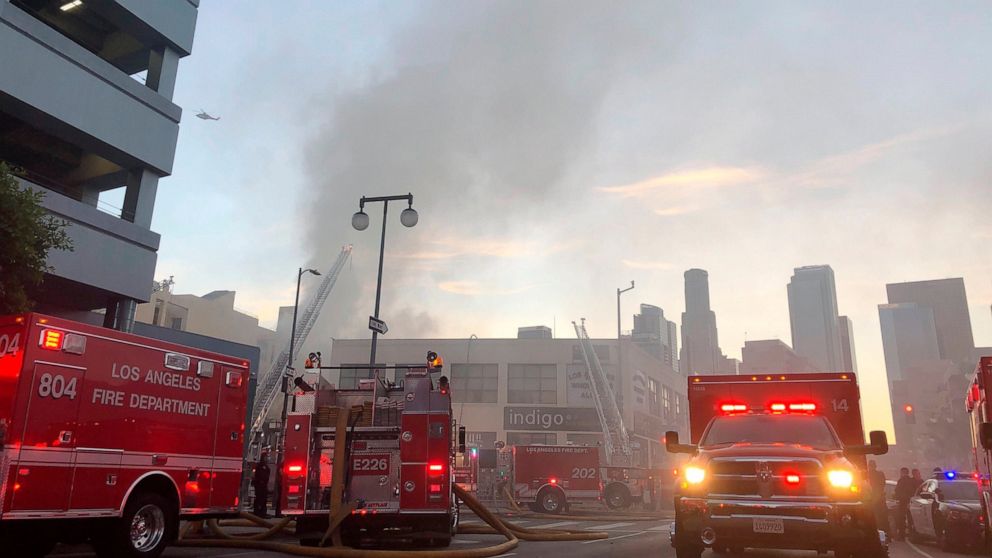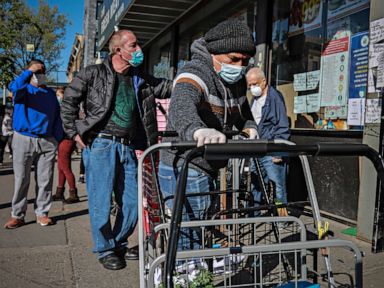
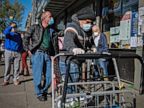

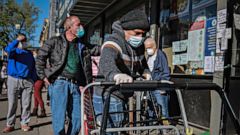
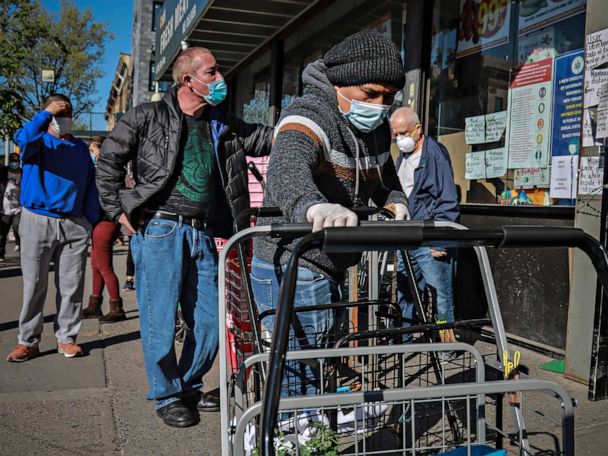
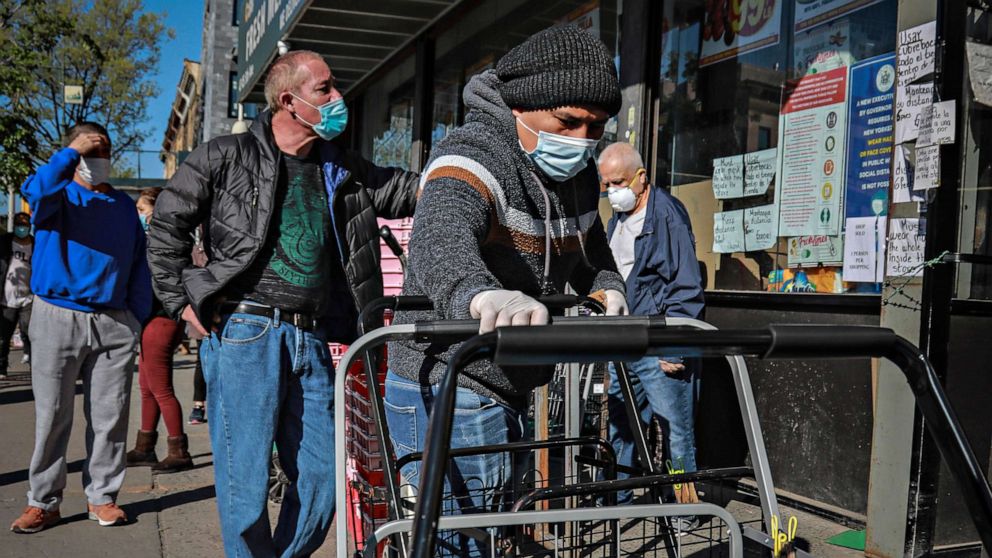
Recommendations on how to protect ourselves from contracting the virus that causes COVID-19 are everywhere, like washing your hands, wearing a mask, and staying at least 6 feet away from people outside your home. But not all risks are created equal; home, public transportation and the grocery store all have different challenges.
A blog post by University of Massachusetts Dartmouth professor, Dr. Erin Bromage, who studies immunity of infectious diseases in animals, titled “The Risks – Know Them – Avoid Them” garnered major attention for showing that some of the highest risk areas may not be what you’d expect.
A lot of attention is being spent on opening up the economy, but it seems like the highest risk is more likely your own living room.
The data suggests that most people will get infected in their home, according to Bromage.
Tune into ABC at 1 p.m. ET and ABC News Live at 4 p.m. ET every weekday for special coverage of the novel coronavirus with the full ABC News team, including the latest news, context and analysis.
So where are the highest risk areas in the community for getting infected?
“The general theme of what I can see is, lots of people together in an enclosed environment with poor airflow and usually some sort of talking or singing involved leads to lots of people in that environment getting infected,” said Bromage, in an interview with ABC News.
Case studies that traced back COVID-19 outbreaks at the beginning of the pandemic, have found that the main sources of infections in the community lead back to the workplace, public transportation, social gatherings, and restaurants — indoor environments, with limited air circulation, and many people spending a prolonged period of time in the same place.
Some of the biggest outbreaks, excluding nursing homes, in fact, that have been reported and traced occurred in prisons, religious ceremonies, choir practices, indoor sporting events, and even birthday parties.
“You’ve got a lot of people in an enclosed space with lots of huffing, puffing, or yelling, which just led to large outbreak events,” Bromage said.
Being exposed to the virus does not automatically mean you will be infected. A successful infection is dependent on the time exposed to the virus and the amount of viral particles you are exposed to. For example, “While joggers may be releasing more virus due to deep breathing, remember the exposure time is also less due to their speed,” Bromage writes.
Scientists call the amount of exposure to the virus that leads to infection the “infectious dose.” Although scientists are still learning more about how many viral particles lead to infection, they do know that sneezing and coughing release the highest amount of viral material into the air, and you’re more likely to become infected if you’re in a confined space.
A single sneeze, according to Bromage, has been estimated to release about 30,000 droplets that can travel up to 200 miles per hour, which means it could easily cross a room. A cough releases round 3,000 droplets that can travel around 50 miles per hour. These particles may drop to the ground or could hang around in the air for a short period of time.
In fact, a recently published study showed that speaking loudly in an enclosed space creates “substantial” risk of transmitting the virus to others. Prolonged contact and lots of direct talking, breathing, and yelling between individuals increases the direct exposure to viral particles, which increases the likelihood for infection.
The amount of virus a person release changes over the course of the infection and varies by person. This is dependent on the infected persons’ viral load, which is the amount of the virus detected in a test sample from a patient and reflects how well the virus is replicating.
Many people are asymptomatic and may easily spread the virus, unknowingly, by directly talking, singing, yelling, or even breathing around other people in close contact. This is why the CDC advises that everyone wear face coverings in public.
Bromage underscores that the exact number of people infected by respiratory droplets versus transmission through touching contaminated objects like door handles and elevator buttons is unknown, which is why it’s also important to wash your hands often and avoid touching your face. But the compilation of studies he wrote, “serves to highlight that being in an enclosed space, sharing the same air for a prolonged period increases your chances of exposure and infection.”
In very high-risk situations, social distancing guidelines are not as effective because even if you are far away from an infected individual in a small, poorly ventilated enclosed space for a long period of time, a low dose of the virus in the air can reach you and over a sustained period of time may be enough to cause infection.
Bromage said that the activities many typically view as highest risk for infection like grocery shopping might not be as risky if you’re spending a brief amount of time at the store, you’re avoiding other shoppers, not speaking directly with people, and the store restricts the number of people that can enter at a given time.
Public bathrooms may also pose a risk, but for slightly different reasons, said Bromage. Bathrooms have a lot of high touch surfaces like door handles, faucets, and countertops.
So far, the science seems to suggest that outdoor areas and large ventilated spaces are the lowest risk areas for infection. Outdoor areas are generally safer because wind and infinite air space could dilute the viral particles circulating. If you are actively moving outside that also reduces the exposure time to any viral particles hanging around.
With restrictions lifted in some states, many Americans will face a new challenge: “Just because something is open doesn’t mean it is an instruction to go,” said Dr. Andrew Noymer, associate professor of population health at UC Irvine.
Before you put yourself in a high-risk situation, Bromage suggests asking yourself, “Are there too many people here and how much time have they spent here? Are there loud talkers? Singing or yelling? What’s the amount of people in my area that actually are infected?” If you are in an environment with a lot of people, you should also assess what changes the business owner put in place to lower the risk of virus spreading.
If you choose to meet other people, you should also consider their level of exposure and health status. Ask your friends or family where they have been, how often they go to the store and whether they have been staying home, suggests Dr. Henry Raymond, epidemiologist and associate professor at Rutgers University.
What to know about coronavirus:
- How it started and how to protect yourself: Coronavirus explained
- What to do if you have symptoms: Coronavirus symptoms
- Tracking the spread in the U.S. and worldwide: Coronavirus map
“It’s not just about your health but about the health of those people around you,” Raymond said.
If you know your friend or relative has underlying health conditions or is at an increased risk of developing severe symptoms due to a weaker immune system you should take extra precautions to avoid exposing them to the virus. If your state permits social gatherings and you decide to meet up, keep it to a small group and make it safe as possible by staying outside, Raymond said. Agree on some ground rules, such as: “We don’t shake hands, we bring our own food, we space the chair out at least 6 feet away.”
“The best course of action is to be personally cautious and personally responsible. We don’t have a vaccine. But we do have social distancing and masks,” said Raymond.
Eden David, who’s studying neuroscience at Columbia University and is matriculating to medical school later this year, is a contributor to the ABC News Medical Unit.

